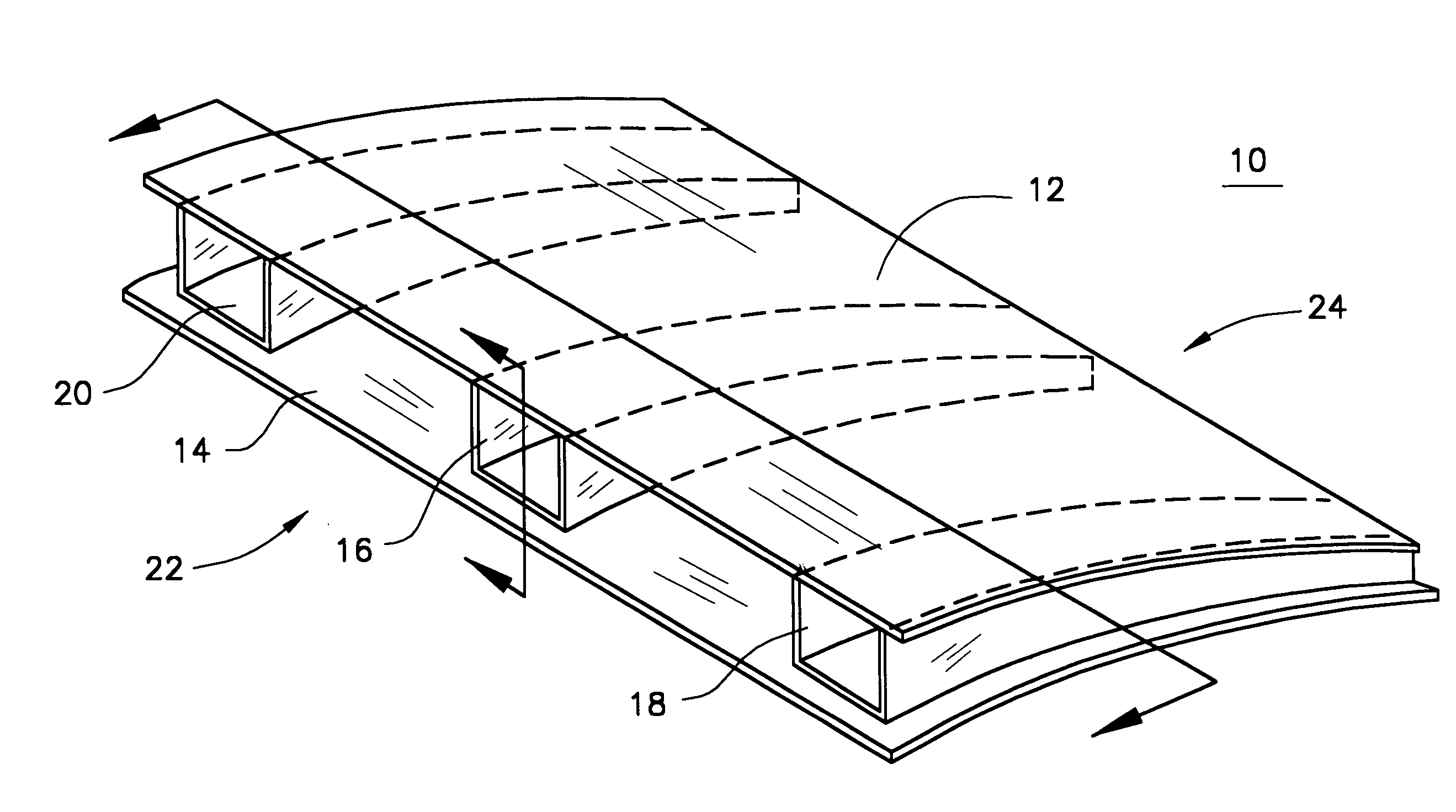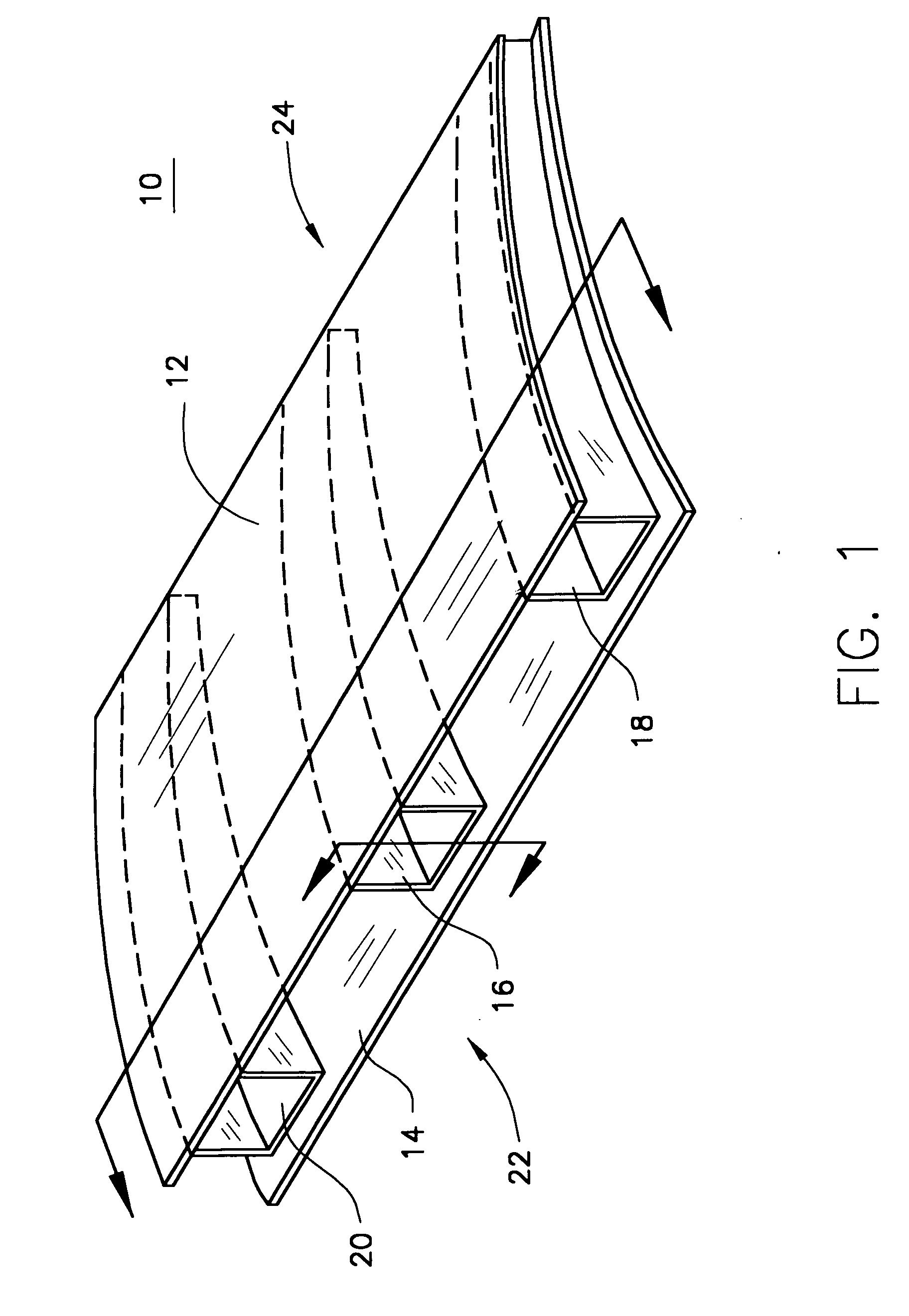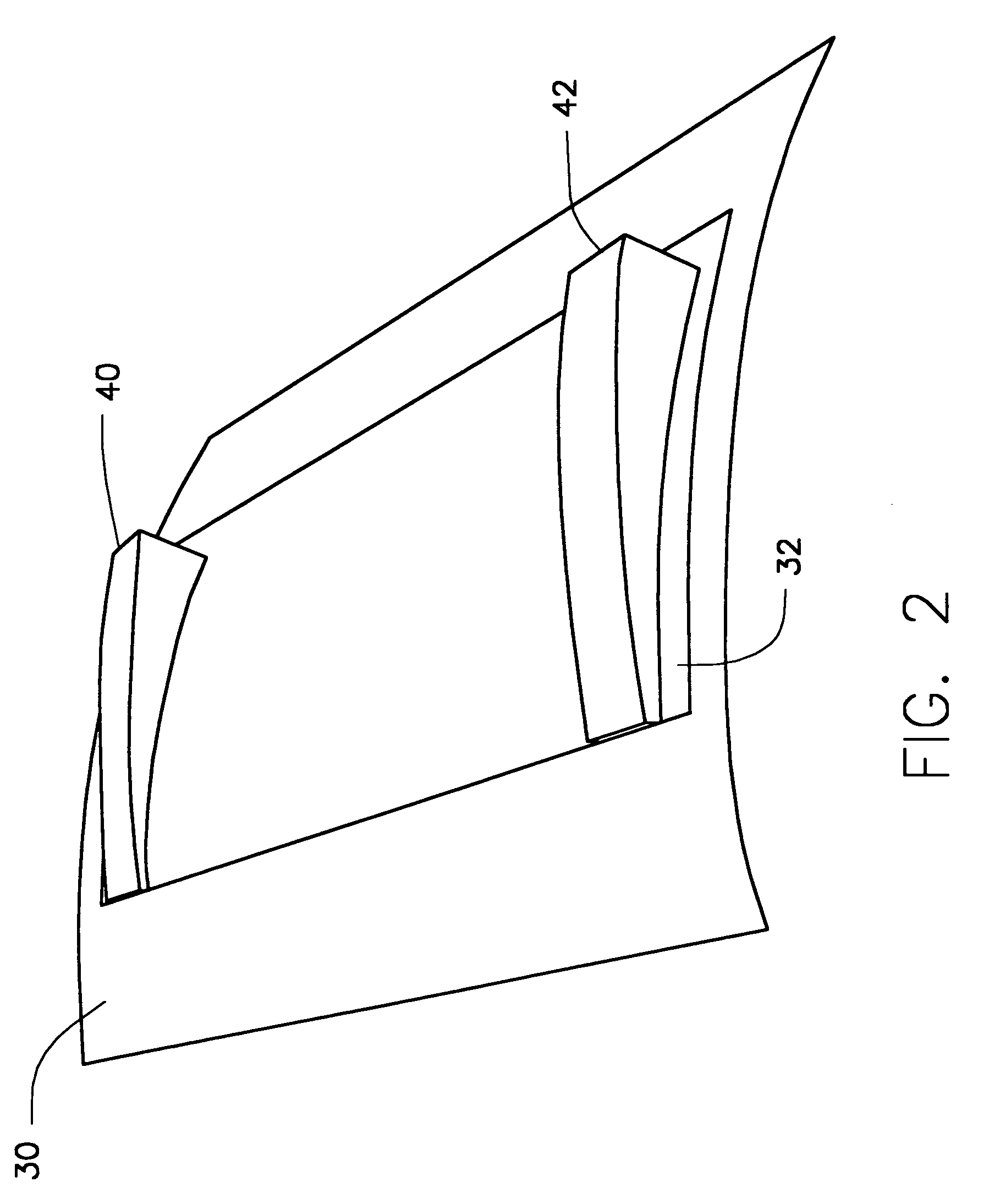Advanced composite aerostructure article having a braided co-cured fly away hollow mandrel and method for fabrication
a composite aerostructure and hollow mandrel technology, applied in the field of advanced composite aerostructure articles and methods of fabrication, can solve the problems of requiring costly non-recurring tooling and/or costly recurring manufacturing steps, requiring at least three very expensive and man-hour consuming cure cycles, and presenting additional challenges to current techniques for fabricating composite structures. , to achieve the effect of easy repair and light assembly weigh
- Summary
- Abstract
- Description
- Claims
- Application Information
AI Technical Summary
Benefits of technology
Problems solved by technology
Method used
Image
Examples
Embodiment Construction
[0042]Referring to the drawings in detail and in particular to FIG. 1, the reference character 10 generally designates an aerostructure article constructed in accordance with an exemplary embodiment of the invention. The article 10 is an advanced composite co-cured structure having a unitary skin 12 and 14 and longitudinally extending spaced reinforcing hat sections 16, 18 and 20 for the illustrated exemplary part. The article 10 as shown tapers from the forward portion 22 to the aft portion 24. The illustrative example of the invention 10, shown in FIG. 1, is representative of a spoiler unit for an aircraft wing, but the use of the invention for the fabrication of aerostructure articles extends to other shapes and applications.
[0043]Referring now to FIG. 2, the specific novel method of the present invention will be described. A suitable lay-up mandrel or composite bond jig (COBJ) 30 having a predetermined shape, such as that used to provide the accurate shape of the skin 14 of the ...
PUM
| Property | Measurement | Unit |
|---|---|---|
| temperature | aaaaa | aaaaa |
| angle | aaaaa | aaaaa |
| pressure | aaaaa | aaaaa |
Abstract
Description
Claims
Application Information
 Login to View More
Login to View More - R&D
- Intellectual Property
- Life Sciences
- Materials
- Tech Scout
- Unparalleled Data Quality
- Higher Quality Content
- 60% Fewer Hallucinations
Browse by: Latest US Patents, China's latest patents, Technical Efficacy Thesaurus, Application Domain, Technology Topic, Popular Technical Reports.
© 2025 PatSnap. All rights reserved.Legal|Privacy policy|Modern Slavery Act Transparency Statement|Sitemap|About US| Contact US: help@patsnap.com



